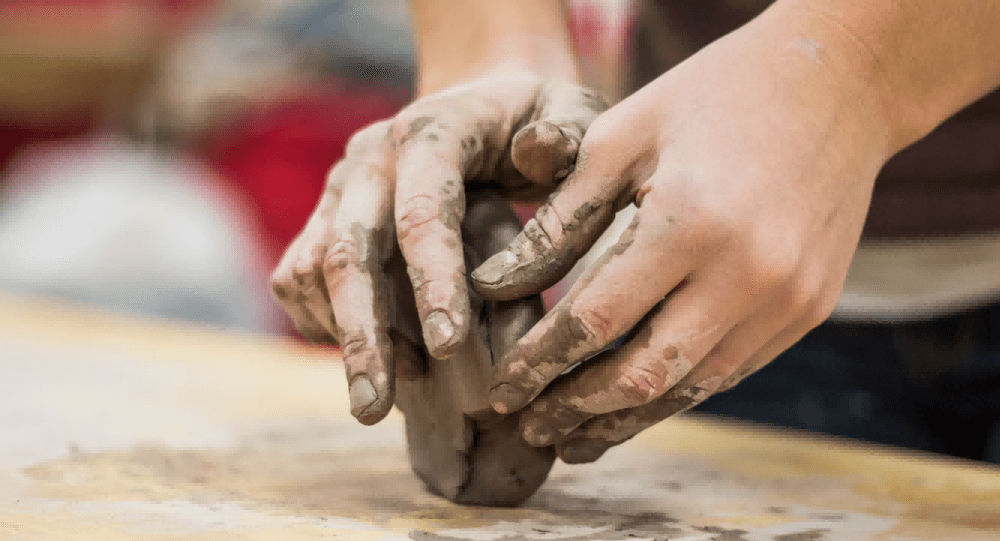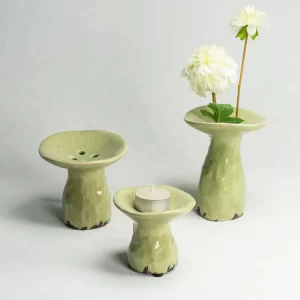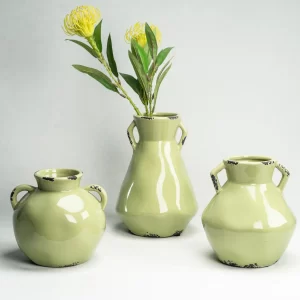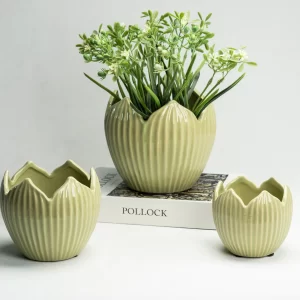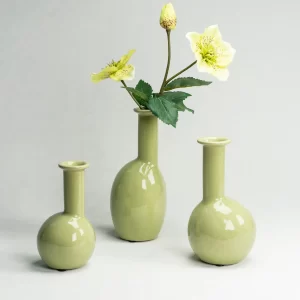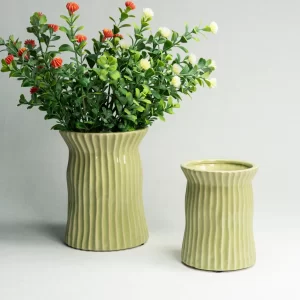La cerámica es una artesanía perdurable que la gente adora por su belleza única y su practicidad. Tanto en la vida cotidiana como en el ámbito de la colección de arte, la cerámica ocupa un lugar insustituible. Como fabricante profesional de cerámicale llevaremos a un conocimiento más profundo del mundo de la alfarería, que incluye las cuatro partes siguientes: empezando por la definición de alfarería, siguiendo por la capa de esmalte, la composición del barro y, por último, el proceso de producción.
Qué es la cerámica ?
Los productos de arcilla natural mediante moldeado, secado y cocción se denominan alfarería. Normalmente se cuece a una temperatura de 900°C a 1200°C para darle suficiente dureza y durabilidad. En comparación con la porcelana, la alfarería tiene una textura más gruesa, generalmente con una densidad de sinterización menor, y tiende a los colores cálidos marrones o rojos. La cerámica puede utilizarse no sólo en la fabricación de artículos prácticos, como vajillas, jarrones y adornos, sino también como medio artístico lleno de cultura y personalidad.
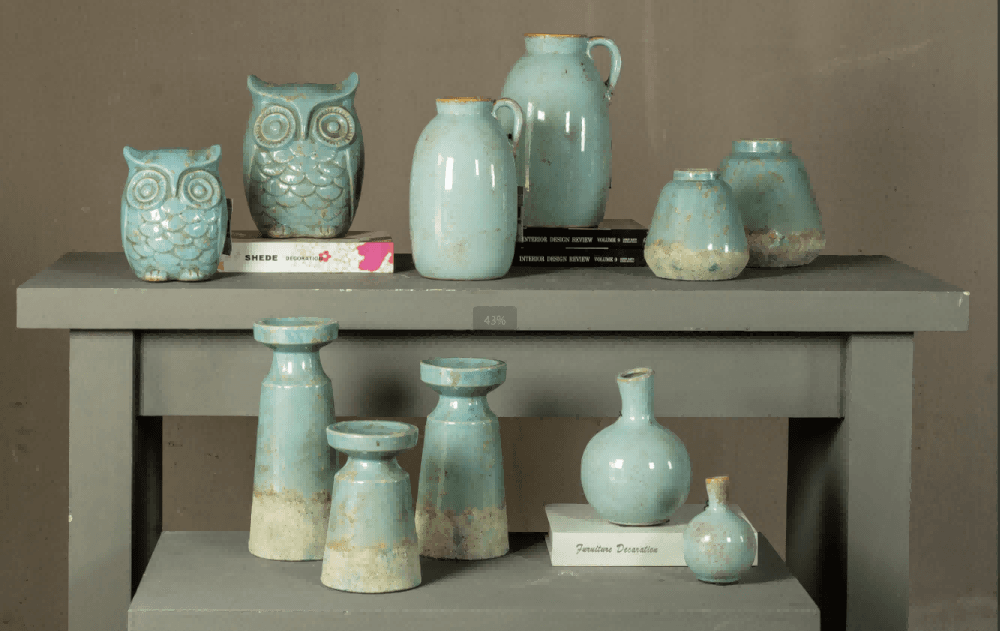
Qué es un engobe en cerámica?
La barbotina es un material habitual en la alfarería, hecho de arcilla y agua. Se utiliza en diversos procesos, como el moldeado, la unión de piezas y el coloreado. Su composición y proporciones suelen ajustarse ligeramente según las distintas necesidades. Entre sus funciones específicas se incluyen:
Conexión: En el proceso de fabricación de cerámica, la barbotina puede utilizarse como adhesivo para unir diferentes partes de arcilla.
Colorear y decorar: Los pigmentos minerales pueden añadirse y aplicarse como engobe decorativo a la superficie de la cerámica para enriquecer el efecto visual.
Reparación y nivelación: Puede rellenar superficies irregulares y aumentar la finura de la superficie de la cerámica.
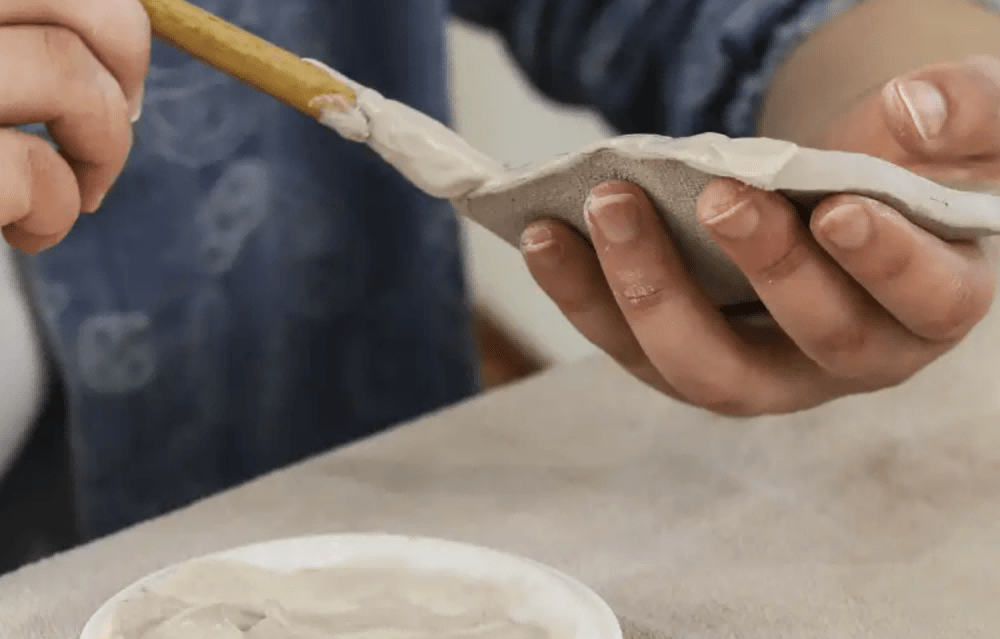
Cuántas capas de esmalte en la cerámica?
El vidriado es una capa protectora y decorativa de la superficie de la cerámica. Tras la cocción a alta temperatura, se vitrifica, lo que hace que la superficie de la cerámica sea lisa y fácil de limpiar, al tiempo que mejora su resistencia al agua y su durabilidad. El número de capas de esmalte depende del diseño y de los requisitos funcionales:
Esmalte monocapa: El esmalte monocapa suele aplicarse a la cerámica sencilla. Es barato, fácil de manejar y adecuado para la producción en masa.
Esmalte bicapa o multicapa: Si desea colores y texturas más intensos, puede aplicar una segunda capa de glaseado después de que se seque la primera. La superposición de distintas capas de esmalte puede producir efectos únicos, como degradados y grietas. Se trata de un esmalte de doble capa o multicapa.
Combinación de esmalte transparente y esmalte coloreado: En algunas cerámicas artísticas se aplica primero un esmalte de color y luego se cubre con una capa de esmalte transparente. La combinación de esmalte transparente y esmalte de color puede realzar la estratificación y el brillo del color. Sin embargo, este proceso de esmaltado multicapa tiene unos requisitos elevados de control del proceso y la temperatura, pero el efecto visual del producto acabado es particularmente excepcional.
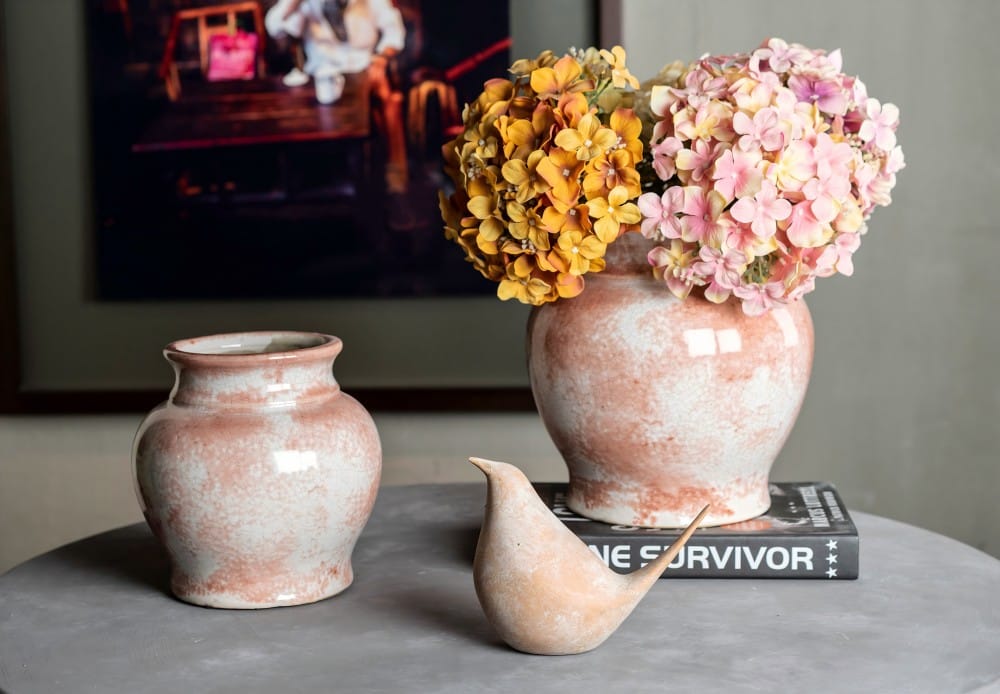
Cómo iniciarse en la alfarería?
La fabricación de cerámica es un proceso creativo y técnico que suele incluir los siguientes pasos:
Preparación de la arcilla: Elige el tipo de arcilla adecuado (como arcilla roja, arcilla blanca), y ponla blanda y pegajosa después de removerla y amasarla.
Moldeado: Puedes utilizar el amasado manual, el lanzamiento, los moldes y otros métodos para dar a la arcilla la forma deseada. Mantén las manos húmedas durante el moldeado para evitar que la arcilla se seque y se agriete.
Secado: La cerámica moldeada debe secarse de forma natural, normalmente durante unos días, para evitar las grietas causadas por la rápida evaporación del agua.
Acristalamiento: Sumerja la cerámica seca en la lechada de esmalte, o utilice el pincel, el pulverizador y otros métodos para aplicar uniformemente el esmalte sobre la superficie. Elija un esmalte monocapa o multicapa según sus necesidades.
Disparando: El último paso es la cocción a alta temperatura, y la temperatura y el tiempo dependen del tipo de cerámica y del esmalte. Tras la cocción, la cerámica tendrá una textura dura y una superficie brillante.
